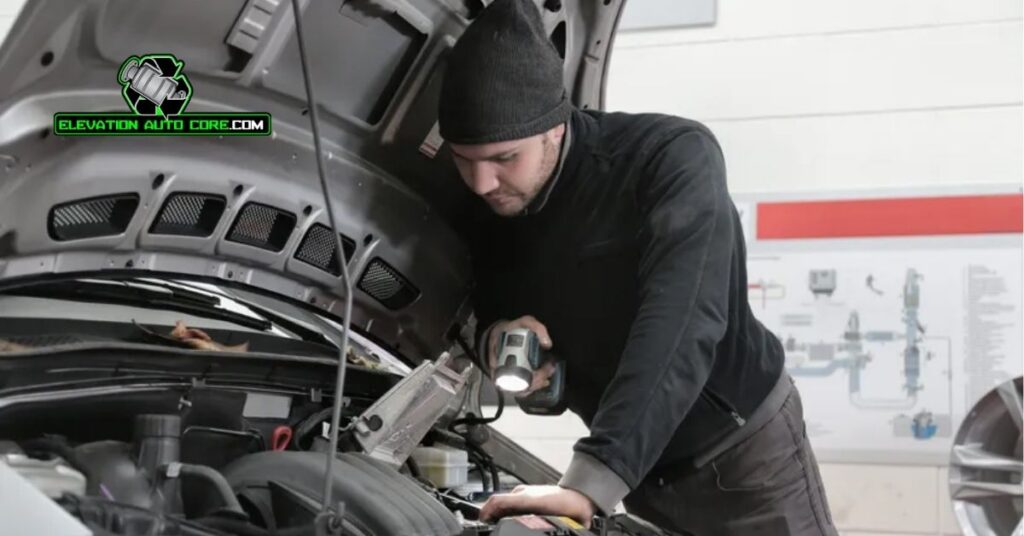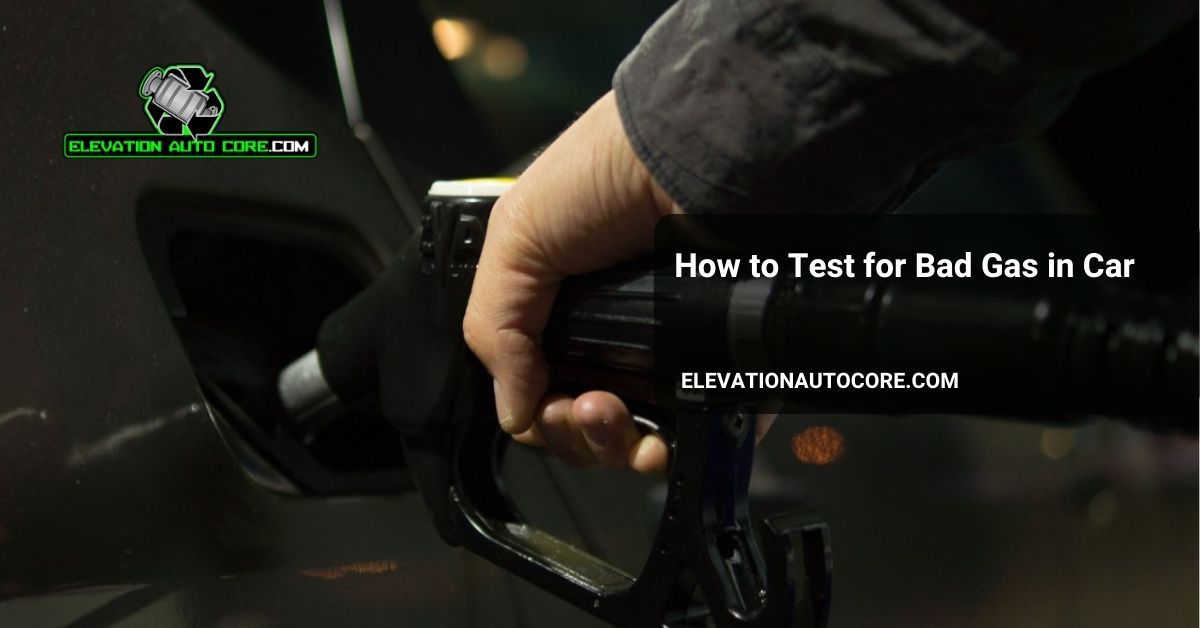Ever wondered if bad gas could be the reason your car’s acting up? Contaminated or old fuel can wreak havoc on your engine, leading to poor performance or even costly repairs. Knowing how to test for bad gas in your car can save you time, money, and frustration—so let’s jump into the signs and steps to identify the problem.
Signs Of Bad Gas In Your Car

Bad gas affects engine performance and signals trouble through clear signs. Identifying these warning signs helps you address the issue promptly.
Difficulty Starting The Engine
A common sign of bad gas is trouble starting the car. Contaminated fuel prevents the engine from igniting properly, leading to extended cranking. If the issue persists even though a charged battery and functioning starter, it’s likely due to poor-quality fuel.
Unusual Noises Or Misfires
Loud noises or irregular misfires during acceleration often indicate bad gas. Water or debris in the fuel disrupts combustion, creating knocking or pinging sounds. Engines may also hesitate or shake as low-quality gas affects consistency.
Decreased Fuel Efficiency
You may notice worsening fuel economy when bad gas is present. Fuel injected with particles or ethanol burns inefficiently, requiring more gas to achieve usual performance. Monitoring mileage changes helps identify potential contamination.
Tools And Equipment Needed For Testing

Identifying bad gas in your vehicle requires exact tools to ensure accurate and safe testing. These items allow you to pinpoint contamination and assess fuel quality effectively.
Gasoline Testing Kit
A gasoline testing kit is essential for checking fuel quality. These kits often include tools like test tubes, reagent bottles, and instructions for detecting water, ethanol, or sediment contamination. Using a testing kit simplifies the process, making it possible to identify issues without professional help. Select a high-quality kit designed for automotive fuel analysis to get reliable results.
Fuel Gauge And Diagnostic Tools
Fuel gauges help monitor contamination indirectly by evaluating fuel system performance. Diagnostic tools like OBD2 scanners read error codes related to your engine or fuel system, which can hint at fuel issues. Combined with a manual inspection, these tools allow thorough testing and direct identification of bad gas-related symptoms.
Safety Gear And Precautions
Safety gear protects you when handling gasoline. Equip yourself with gloves and safety goggles to avoid direct skin or eye contact. Work in a well-ventilated area to prevent inhaling harmful fumes, and keep an approved fire extinguisher nearby for emergencies. Always follow manufacturer instructions on testing devices to ensure safe and efficient use.
Step-By-Step Guide On How To Test For Bad Gas In Car

Testing for bad gas helps identify contamination or quality issues affecting your car’s performance. Follow these methods to pinpoint the issue effectively.
Checking The Fuel Smell And Appearance
Inspect the fuel by opening the gas cap or siphoning a small sample. A sour or varnish-like smell often indicates old or contaminated gas. Look at the color in a clear container. Clean fuel appears clear or slightly amber, while discoloration or cloudiness suggests contamination. Sediment or particles at the bottom signals impurities, possibly from rust or debris.
Using A Gasoline Testing Kit
A gasoline testing kit gives precise results when identifying fuel problems. Start by collecting a sample from your car’s fuel tank, following the kit’s instructions. Use the tools to check for water contamination, which separates from gasoline and forms layers. Analyze the ethanol percentage if high ethanol content is suspected, as it can cause engine issues. Follow all safety instructions during the process.
Testing Fuel Pressure And System Performance
Fuel pressure testing reveals problems caused by contaminated or degraded fuel. Connect a fuel pressure gauge to your car’s fuel system as specified in your vehicle’s manual. Compare the readings to the manufacturer’s recommended pressure range. Low or abnormal readings may indicate clogging or poor-quality gas impacting fuel delivery. Use an OBD2 scanner to check for error codes linked to fuel system failures.
Preventing Bad Gas In The Future

Taking precautions can help you avoid encountering bad gas and its associated problems. Implementing strategies like choosing reputable fuel stations, maintaining your fuel system, and proper fuel storage makes a important difference.
Choosing The Right Fuel Stations
Select fuel stations that consistently maintain high-quality standards. Larger chains often have superior fuel filtration systems and stricter quality control. Avoid filling up at stations with infrequent tanker deliveries, as stagnant fuel increases the risk of contamination. Verifying ratings or customer reviews of a station can also provide insight into their reliability.
Maintaining Your Fuel System Regularly
Clean and inspect your vehicle’s fuel system periodically. Replacing your fuel filter every 20,000 to 30,000 miles, depending on your manufacturer’s guidelines, ensures contaminants don’t enter the engine. Use fuel system cleaners to remove deposits or impurities that accumulate over time, improving overall performance. Checking the fuel cap seal prevents moisture or debris from entering the tank.
Storing Fuel Properly For Long Periods
Store fuel in approved containers made of sturdy, corrosion-resistant materials. Place these containers in cool, dry, and ventilated areas to minimize moisture accumulation, as humidity degrades gasoline quality. Adding fuel stabilizers, which preserve gasoline for up to 24 months, reduces the likelihood of chemical breakdown during storage. Always label containers with the storage date to track fuel freshness.
Conclusion
Testing for bad gas is a crucial step in maintaining your car’s performance and avoiding costly repairs. By recognizing the signs of contaminated fuel and using the right tools and techniques, you can quickly identify and address the issue before it worsens.
Taking preventive measures, like choosing reliable fuel stations and maintaining your fuel system, ensures your car runs smoothly and efficiently. With a little attention and care, you can protect your engine and keep your vehicle in top condition for years to come.

